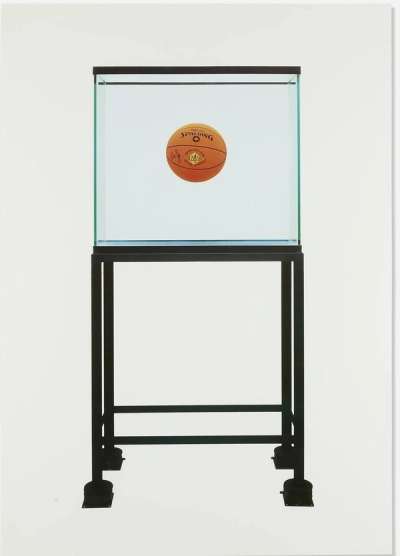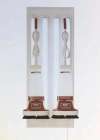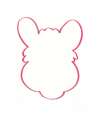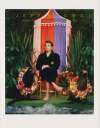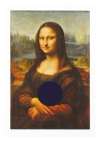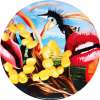Equilibrium
Jeff Koons' Equilibrium series was his first solo exhibition, at the New York Gallery, and featured glass tanks containing submerged basketballs that seemingly defied physics, remaining suspended rather than floating. The prints after the exhibition reflect Koons’ implicit theme of social mobility and class hierarchy.
Jeff Koons Equilibrium For sale
Equilibrium Market value
Auction Results
| Artwork | Auction Date | Auction House | Return to Seller | Hammer Price | Buyer Paid |
|---|---|---|---|---|---|
 One Ball Total Equilibrium Tank Jeff Koons Signed Print | 19 Sept 2023 | ART+OBJECT | £1,105 | £1,300 | £1,500 |
 Truck Jeff Koons Signed Print | 25 Oct 2016 | Phillips New York | £25,500 | £30,000 | £40,000 |
Sell Your Art
with Us
with Us
Join Our Network of Collectors. Buy, Sell and Track Demand
Meaning & Analysis
This compilation of works is entitled Equilibrium and takes its name from a subject with which Jeff Koons first became fascinated during the 1980s: the humble basketball. In 1985, Koons created a series of works for what was his first-ever solo exhibition, Equilibrium at the New York Gallery. Glass and steel tanks like those one might see in the fish section of a pet shop were equipped with pneumatic feet; inside each tank, a different number of professional-sized basketballs (1, 2, and then 3) were submerged in a solution of water of distilled water and sodium chloride. The effect? Something Koons dubbed ‘total equilibrium’.
To create the works, Koons sought out the scientific know-how of Richard P. Feynman, a well-known American physicist and Nobel Prize Winner. Feynman advised him on how best to achieve a permanent state of equilibrium in one of his glass tank installations; following Feynman’s advice, Koons added reagent grade sodium to the tank, layering the liquid with saltwater and freshwater so that each basketball appeared to levitate. Suspended at a mid-point within a mystifying aqueous solution, the basketballs ascribed the installation works with an inscrutable allure. Many onlookers were unsure if these were indeed ‘real’ life basketballs that had been placed inside the tanks; some were undecided as to how they were able to remain at a fixed position, neither floating up to the top, nor sinking to the bottom. In One Ball Total Equilibrium (1995), a lithograph print portraying one of Koons’ 1985 installations, we are party to the full effect of these perplexing works, which have been described as some of the ‘most influential works in the history of contemporary art’. The lithograph print Truck (1985) portrays one of the many photographic pieces Koons fabricated as a visual accompaniment to these semi-illusionist basketball-themed pieces. An advertising poster originally created by the American sportswear giant Nike, it depicts a basketball player sat on the front bumper of a large truck.
At the heart of these two pieces lies the somewhat tenuous theme of social mobility. Explaining the complex thematic and conceptual motivations behind them, and other pieces in the original Equilibrium exhibition, Koons one said, “the tanks were an ultimate state of being ... The Nike posters were the Sirens – the great deceivers, saying Go for it! I have achieved it. You can achieve it too! […] So the underlying theme, really, was that death is the ultimate state of being. What was paralleling this message was that white middle-class kids have been using art the same way that other ethnic groups have been using basketball – for social mobility.” Whilst it could be argued that Koons’ words seem to complicate these apparently simple works even further, one thing is sure: they are intimately intertwined with the growth of consumerism by which the 1980s has often been characterised. As these works testify, Koons himself was once a stockbroker; placing consumer items in glass cases, he reduces them to fetish objects to be looked at, but never used. Cryptic or not, Koons asserts – in his trademark tone of both straightforwardness and ambiguity – that these pieces are simply “about enjoying life, about enjoying the opportunities we have to reach our full potential.”
